

Tora Endestad Bjørkheim and Johnny Herbert
In this interview by Tora Endestad Bjørkheim and Johnny Herbert, Norwegian artist Lillian Tørlen reveals her thoughts on materials, vases and the importance of the exhibition site.
Lillian Tørlen’s work is driven by a situational sensitivity crosshatched with frequent use of her go-to material: clay. This latter aspect of her practice was initiated during her period of study at Ålesund Kunstskole and further nurtured during her master’s education at Oslo National Academy of the Arts.
‘Though initially not attached to any specific department at the academy, I eventually ended up in the ceramics department. But this didn’t necessarily mean that I had to work exclusively with ceramics as material, and that became very important for me. I chose the study programme because I wanted to work with materials, but the way I was working with ideas—a method I developed while studying for my bachelor’s degree at Central St. Martin’s College of Art & Design in London—meant that the material often became secondary to the idea.’
This way of working is evident in her openness to different materials; her choice depends on the requirements of a specific site or situation.
‘I work with different materials depending on the idea and what I want to express. Normally I spend quite some time on the ideation process and often need to do a lot of research and testing of materials and techniques before actually producing the work. For example, just recently I’ve learned quite a bit about the tiling in dropped ceiling construction for an installation I’m doing at the art centre Nordnorsk Kunstsenter in Svolvær. Oftentimes, new projects and new ideas bring new challenges.’
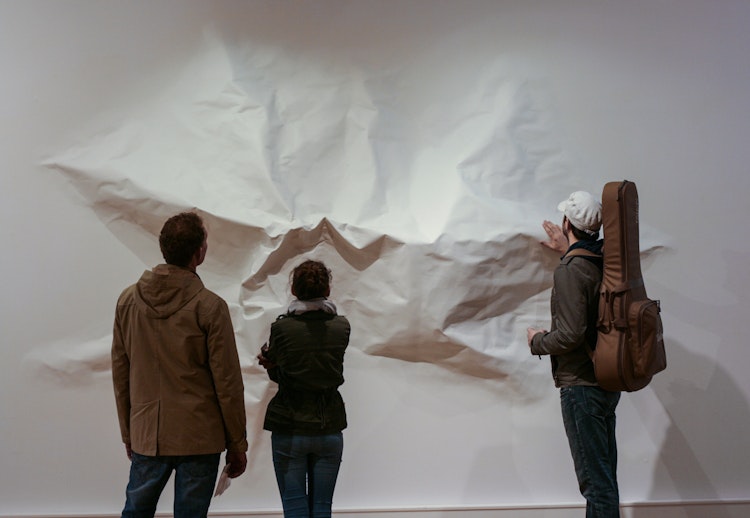
The importance of the site
Her current work with dropped ceiling construction is exemplary of her artistic practice, since it invokes site-specific practices or what might be more precisely thought of as an augmentative proclivity—mutating, supplementing or explicitly gesturing towards something that is already materially present at a site, usually at architectural peripheries of, or entirely outside, traditional gallery spaces.
‘The site is always important: the room or space in which my work is presented is always itself part of the work. A lot of the time, the idea for a piece comes directly from—is inspired by, informed by, inextricably linked to—the space in which it will be exhibited. I like making work that meets the public where they are: to distract, surprise, and take them out of the everyday; to make structures and objects behave in ways different than normal; to obstruct, to induce wonder and to question our habitual acceptance of our surroundings.’
She continues, bringing up more specific approaches to exploring spaces:
‘When I develop a piece specifically for a place, I visit and explore the room, thoroughly investigating every nook and cranny, for example, the surfaces and structures. I listen to the sounds and stories about the place, observe the activities going on within it, look at how the space works, its function, its history, and so forth. I like to have as much information as possible as a basis for developing an idea. When I start working through an idea, I examine what stayed with me or caught my attention. Sometimes my point of departure will be inspired by something on site, but it can also be inspired by my responses to the site—how I feel and experience my stay or visit.’

A non-space in Dublin
Despite having such a cogitated approach, Tørlen strives to keep it as flexible and open to contingency as possible:
‘I often spend a lot of time searching and developing ideas, with many rounds of re-visiting different ideas. This openness, with regards to both ideas and materials, can be a frustrating process. Afterwards it often seems like the idea I eventually land on was the obvious and straightforward one; a lot of the time, I go through many different ideas and approaches before I end up returning to the initial ones.’
A specific example of her working process is her response to being selected as one of three artists invited by Norwegian Crafts to make a site-specific work in Dublin.1 She describes how the resulting work, Resonance, came about:
‘We were shown amazing spaces as possible sites. On the way from one space to another, we passed through this archway in Dublin Castle, and it kind of stuck with me. I have a penchant for absences and things that aren’t noticed, and this transient space attracted me. It was a sort of non-space, a space people simply moved through, going from one courtyard to another, not a space where you stop, not a point of interest. One particular aspect I remember noticing was that the wind seemed to be constantly gusting through the space. As I researched the castle I learned a lot about its history—its considerable and fraught history mirroring the castle’s heavy structure—and decided to contrast this weight with the lightness of a fleeting moment, the potential of what is to come that lies in a blank sheet of paper.’
Levels of Attachment and Belonging
Tørlen will often work at retuning and repurposing particular pieces to different sites:
‘The first time I was asked if I wanted to exhibit Resonance in a different place other than Dublin, I struggled to get my head around it. In a way, it was difficult to imagine the installation in any other place—how could it carry the same meaning and belong somewhere else? Through the making of new shapes to make the porcelain sheets fit onto different surfaces, I realized that the piece was relatable to many different surroundings.’
Such repurposing or re-situating of specific pieces also demanded that she question her work in more specific ways, thus enriching it further:
‘I think that this internal debate with the site-specificity of my work has made me interested in exploring it further. In my series Levels of Attachment and Belonging (LOAAB), I was interested in finding out on what level it is possible to belong to the transitional space of a gallery, and how the pieces will be able to relate to other spaces following their inevitable removal from a gallery: What happens when a work is moved? How does a work made for a specific place relate to new surroundings? Does it lose its meaning when its original context is changed?’
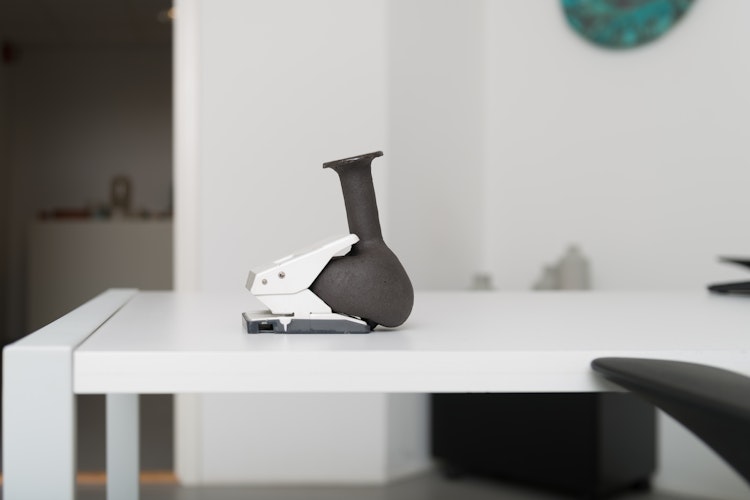
Having completed one permanent installation at Brundalen Skole, Trondheim, in 2015, it would be intriguing to see how she might continue to work with the above concerns and questions in conditions in which the site-specificity of a piece is permanent, that is, in what is called “art in public space”. However, such challenges lie in the future: she is currently finalising an installation at Nordnorsk Kunstsenter and soon afterwards exhibiting at Norwegian Presence during Milan Design Week 2018.2
‘In Milan I’m going to exhibit a collection of pieces from the series LOAAB, creating some new additions to this series in doing so. LOAAB is a series of site-specific vases first created for a solo show in Galleri Format in Oslo. They are pressed, squashed, and shaped by moulds, edges, corners, and furniture, defined by the architecture and interior of the space for which they were created. They relate in different ways to their environment—some through a subtly altered shape, while others seem brutally forced, tearing as they attain their new form. While some have retained their potential as functional vases, others are rendered as useless objects where the characteristics of the vase are nearly wiped out. As the vases are moved from their initial place of exhibition—the space that defined their shape—they take on a different relationship to their new surroundings. Some find similar spaces in which to dwell, and others are rendered as awkward shapes with no apparent sense of belonging.’
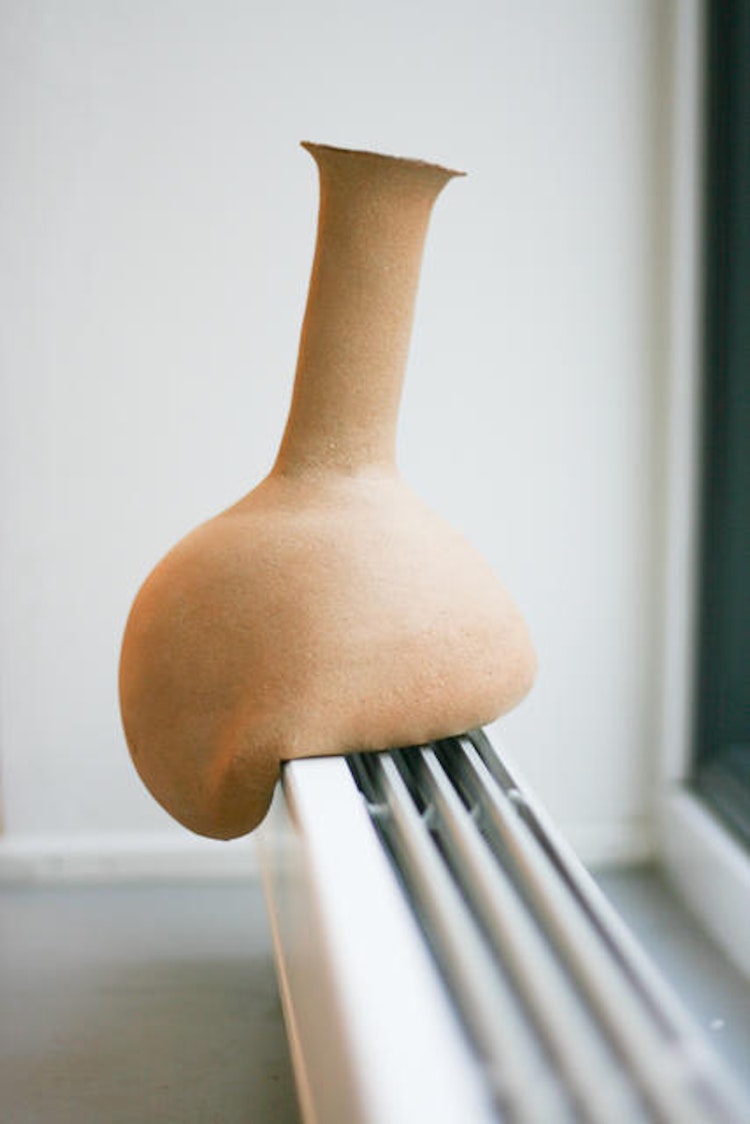
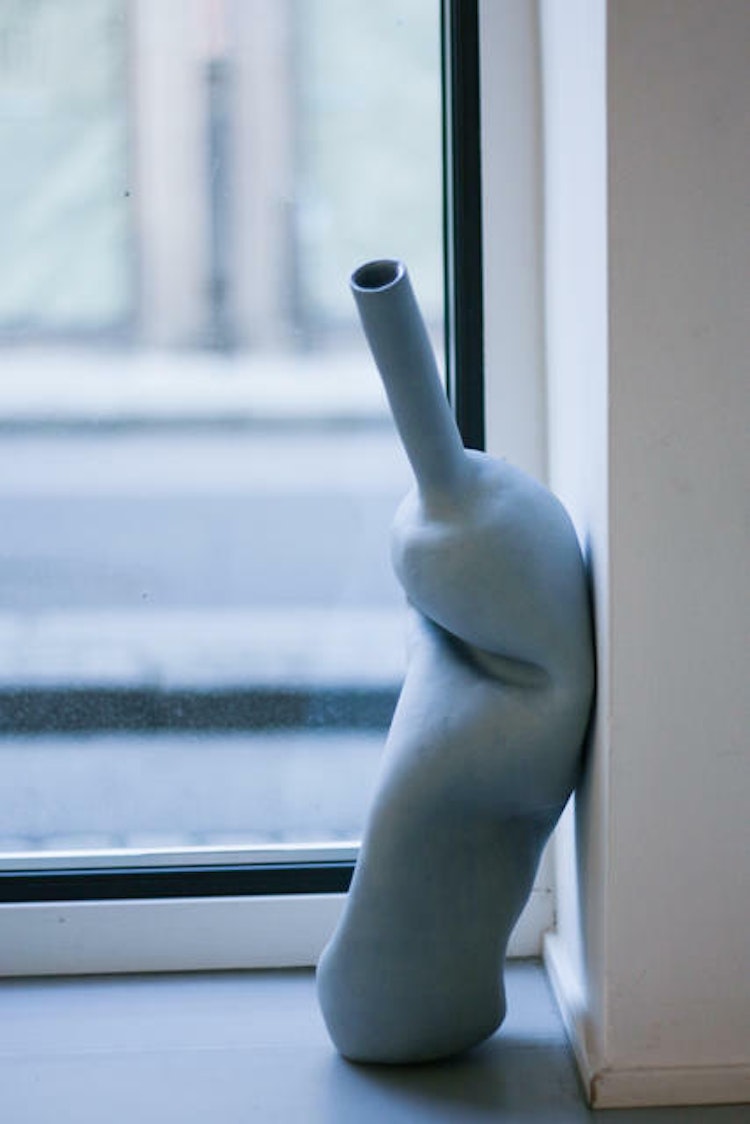
The anatomy of the vase
Reflecting more on the title Levels of Attachment and Belonging, Tørlen again returns to concerns about surroundings, this time with more of a psychological emphasis.
‘I was interested in the degree to which we adapt to places and how places shape us. What compromises do we make in the attempt to fit in and belong? How does where we linger or stay become a part of who we are? The vase became a point of departure to examine the theme of belonging and adaptation, its already established anthropomorphic qualities, with shapes that are often described in terms of human anatomy—feet, belly, shoulder, neck, and lip—being brought to the fore. The presence of several of the vases in the room were marked by an uncomfortable, almost forced adaptation that reinforced a corporeal as well as a psychological reading. By preserving the unglazed clay’s organic expression, this aspect is emphasized.’
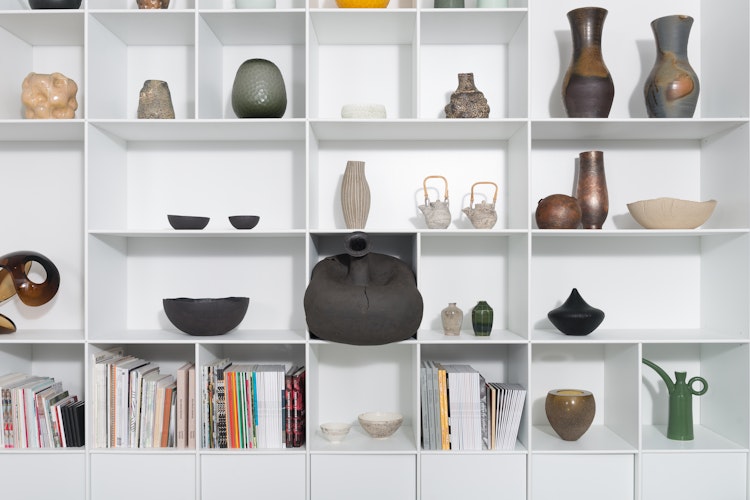
To enable the site-specificity of ceramic works that must be made offsite, Tørlen builds enlarged replicas of the gallery spaces, calculating for shrinkage through the drying and firing process.
‘Some of the vases were adapted to permanent structures in the gallery, while others had their habitat in more temporal environments, e.g., in a hole-punch on a desk, on some books on the counter. A gallery is also in itself a place where works of art are in transit—they only stay in the gallery for a temporary period of time. Since the vases are moved from their original site, the title also refers to the lack of belonging that will be apparent in some of the vases, inasmuch as they have been shaped by a space that is no longer available or near by.’


